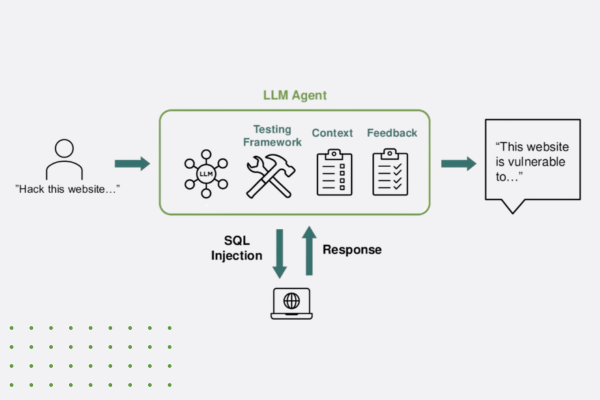Table of Contents
Related Blogs
Mobile applications have access to a large amount of sensitive user data that must be protected from unauthorized access. Discover how app security increases operational efficiency, reduces risk, and improves trust between a business and its users while minimizing mobile application vulnerabilities.
Effective mobile application security is a comprehensive software security solution for mobile apps that run on various platforms like Android, iOS, and Windows. It aims to protect both the personal and/or enterprise data that is stored on devices such as computers, tablets, and smartphones. It also obfuscates code so it can’t be used by threat actors to access enterprise IT networks behind perimeter security. Mobile application security increases operational efficiency, reduces risk, and improves trust between a business and its users as these applications have access to a large amount of sensitive user data that must be protected from unauthorized access.
Each enterprise is unique and so it is often left to the developer to decide what security options work best for their business. Without proper thought and planning, security feature implementation can be reverse-engineered by attackers, leaving your mobile applications vulnerable.
Evaluating the threat landscape
This is especially important today, as the threat landscape is constantly evolving when it comes to security. Within the last few years, the software industry has seen a rise in mobile application attacks. This is due to various contributing factors such as:
-
Monetization: The rise of cryptocurrency, confidential computing, and decentralized finance has made payoff for cybercriminals easier.
-
Industrialization: Cyberweapons in the form of software, tools, and even services are widely accessible for purchase and bad actors no longer need special skills to attack, just motive.
-
Nationalization: Threat actors no longer rely on personal or crime syndicate budgets, but rather they have government-level budgets at their disposal allowing them more time and resources to carry out goals.
These factors, combined with the knowledge that organizations are more prone to data breaches during periods of inactivity, make understanding the weaknesses and vulnerabilities inside an application more critical than ever. The COVID pandemic shut down the world for months and a similar situation can arise again at any moment so be sure your mobile applications will be properly protected for the future. Avoid those mobile application vulnerabilities.
Modern breaches can take companies months to solve without the proper security measures because they’ve secured (and are therefore looking in) the wrong place of their mobile app, leaving high-value enterprise applications and critical services exposed. According to Forbes, 84 percent of all cyber-attacks are happening on the application layer, meaning if your organization is utilizing an outside-in approach then it’s likely you’ll fall victim to an attack if you’re only securing the outside layers. In addition, a recent survey from the Ponemon Institute noted that 71 percent of respondents say just in the past year their organizations’ portfolio of applications has become more vulnerable to attack.
Some examples of mobile application vulnerabilities are:
-
IP theft, Tunneling Attacks and Reverse Engineering
-
Sensitive Data Theft
-
Application Tampering and Script Injection
-
Emulators, Debuggers, Rooted/Jailbroken Devices
-
Malware
-
Frauds and Data Exfiltration
When it comes to mobile application security, the efficacy of controls will ultimately degrade over time if your teams are not actively cultivating it. To do so, organizations will typically build out multiple layers of defense from the inside-out, but this hasn’t always been the case.
Outside-in is out the door
For years, this approach was the go-to standard of cyber security. This method focuses on the perimeter inward, perpetually adding layers like firewalls, end-point protection, email/web gateways, and other protections. This kind of protection ultimately fails because it focuses most of its resources on the pre-breach period of an attack which only allows foresight for external threats.
The outside-in approach is reactive in nature, resulting in complex and costly security infrastructures that consist of endless point solutions that are difficult to manage, measure, and maintain. It creates bottlenecks in the operations environments since there aren’t enough resources to manage everything, all the while escalating enterprise risk by creating security vulnerabilities and compliance gaps.
At the end of the day, this approach simply tries to deny intrusion, rather than providing intrinsic protection from every angle. Perimeter security solutions are open to mobile application vulnerabilities.
Inside-out is preferred
In comparison to outside-in, the inside-out approach to security is fundamentally stronger. This method focuses first on the core requirement of the business: reducing enterprise risk as defined by the clients. Risk is unique to each enterprise, but in terms of security, a data breach poses risks like a business’s damaged reputation, loss of customers and IP, and major financial penalties.
To combat these risks, the inside-out approach centers around users, data, and behaviors. This allows the business objectives to drive the security strategy instead of the threat landscape as more time and resources are dedicated to understanding the internal activities of a network.
Instead of protecting the boundaries between different systems, your enterprise should integrate protection within the application code itself.
“Application developers and security officers should focus on building protections into the applications themselves, an inside-out approach,” says Hagay Sharon, Product Management Lead of Application Security at Digital.ai. “This is also known as ‘shift left’, which prevents attackers from misusing applications, and mobile applications are particularly vulnerable these days.”
The Digital.ai difference
Digital.ai Application Protection solutions do exactly this and enable your application to be a smart, self-protecting app.
Using a network of 50-200 guards, Digital.ai Application Protection has multi-layer protection. These guards are scattered around the app in various locations making it almost impossible for an attacker to decipher the protection flow.
“To avoid a situation where an attacker dismantles or bypasses a guard, we build a network of guards that protects both the application and the guards itself,” explains Sharon. “It is automated, randomized, and obscured protection that makes a developer’s life easier and an attacker’s life harder.”
Protection without visibility isn’t ideal, which is why Digital.ai Application Protection also utilizes app analysis and reporting tools so you can get insight into what’s happening with your apps and end-users. Protection with visibility gives security officers and developers an in-depth look into attackers’ methods, geography, and location of a potential breach. Overall, the solution gives your organization the capability to evaluate your application security and get real-time risk assessment.
Preparing for the future
Threat actors are increasingly using mobile application vulnerabilities to breach perimeter security. These attackers are constantly looking for new ways to exploit weaknesses in your organization’s applications and these cyber-attacks occur on a frequent basis. As the world continues to adjust to a mobile landscape and mobile applications become the main gate for customer interactions and business activity, be sure to protect your enterprise as thoroughly as possible. Remember that you’re only as strong as your weakest link, but with an inside-out security approach, your application is secured from perimeter to code.
Discover how to properly secure your enterprise’s mobile applications in our webinar: “How to Build a Blueprint for Secure Software.”
Are you ready to scale your enterprise?
Explore
What's New In The World of Digital.ai
AI-Powered Hacking or: How To Learn to Stop Worrying and Love the LLM
LLM, Please Write This Intro Before explaining how AI helps…
Announcing Quick Protect Agent: MASVS-Aligned Protections, Now Easier Than Ever
Easily apply OWASP MASVS-aligned protections to your mobile apps—no coding needed. Quick Protect Agent delivers enterprise-grade security in minutes.
“Think Like a Hacker” Webinar Recap: How AI is Reshaping App Security
Discover how generative AI is reshaping app security—empowering both developers and hackers. Learn key strategies to defend against AI-powered threats.




